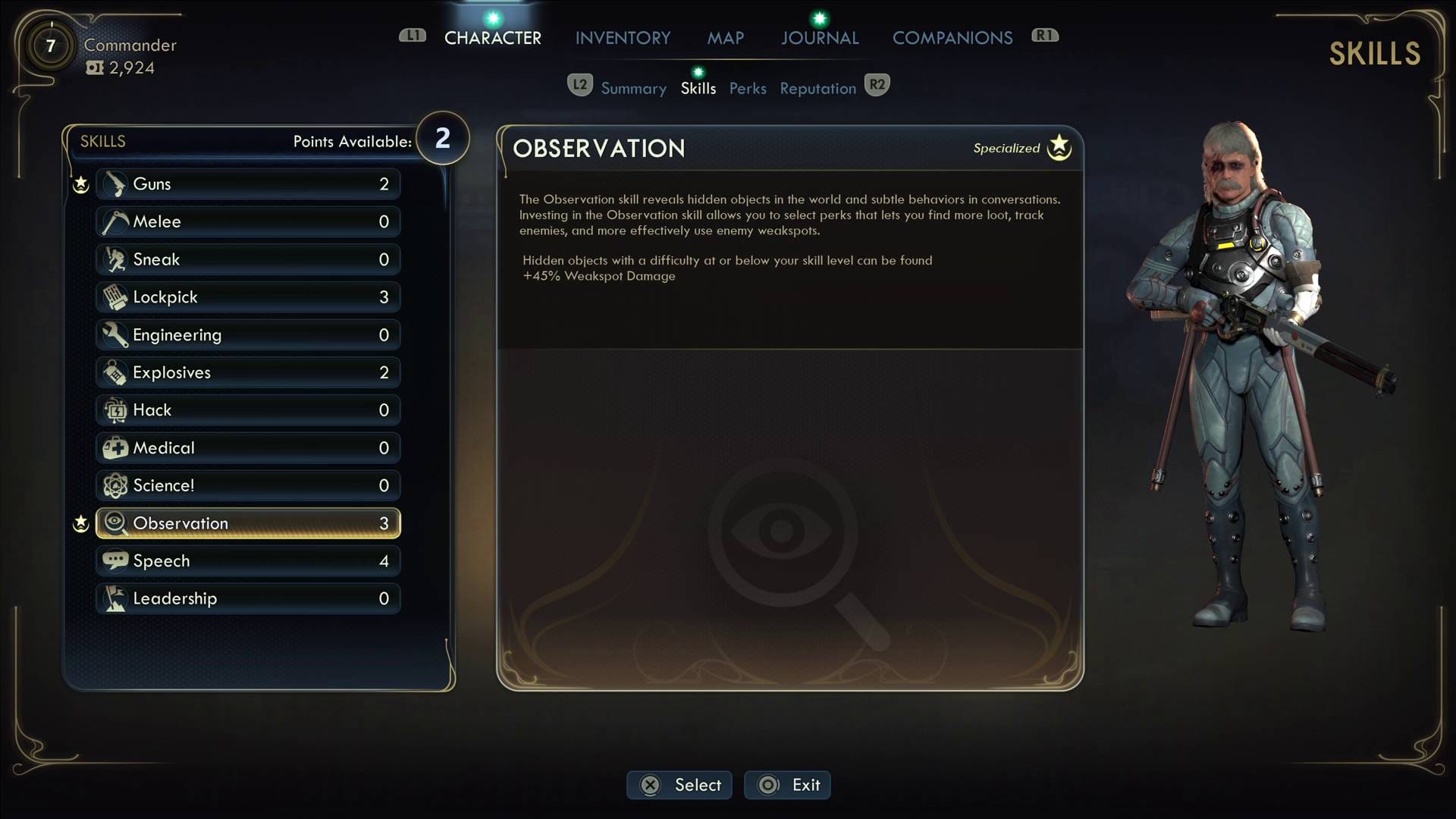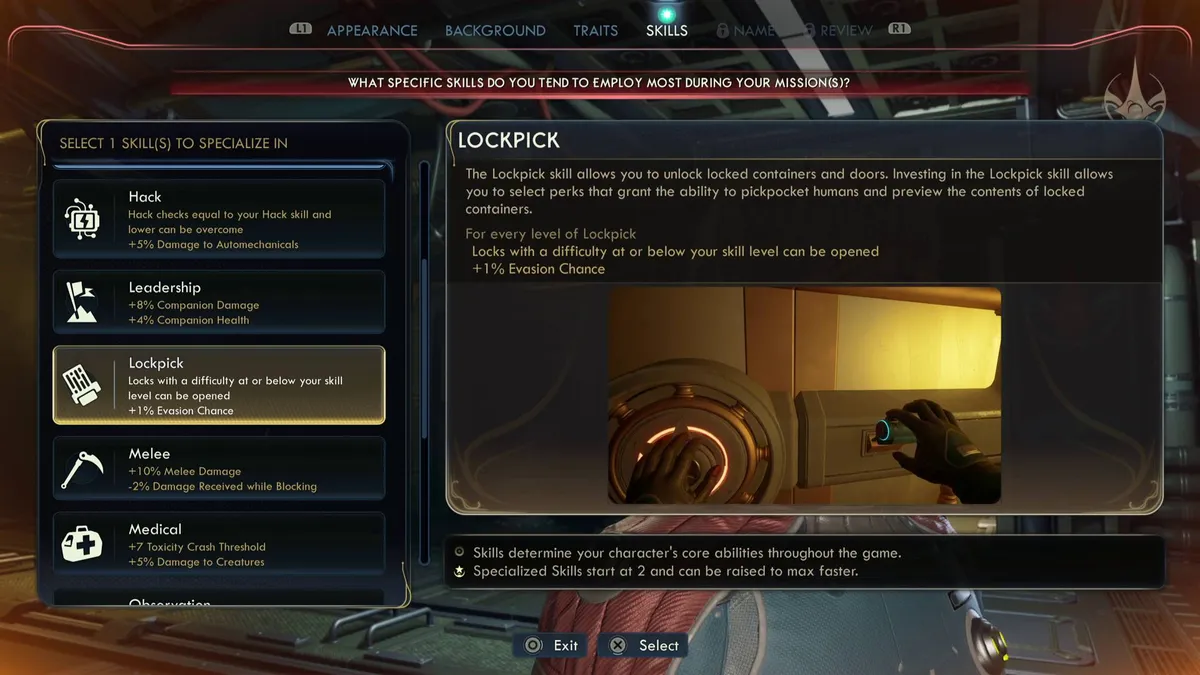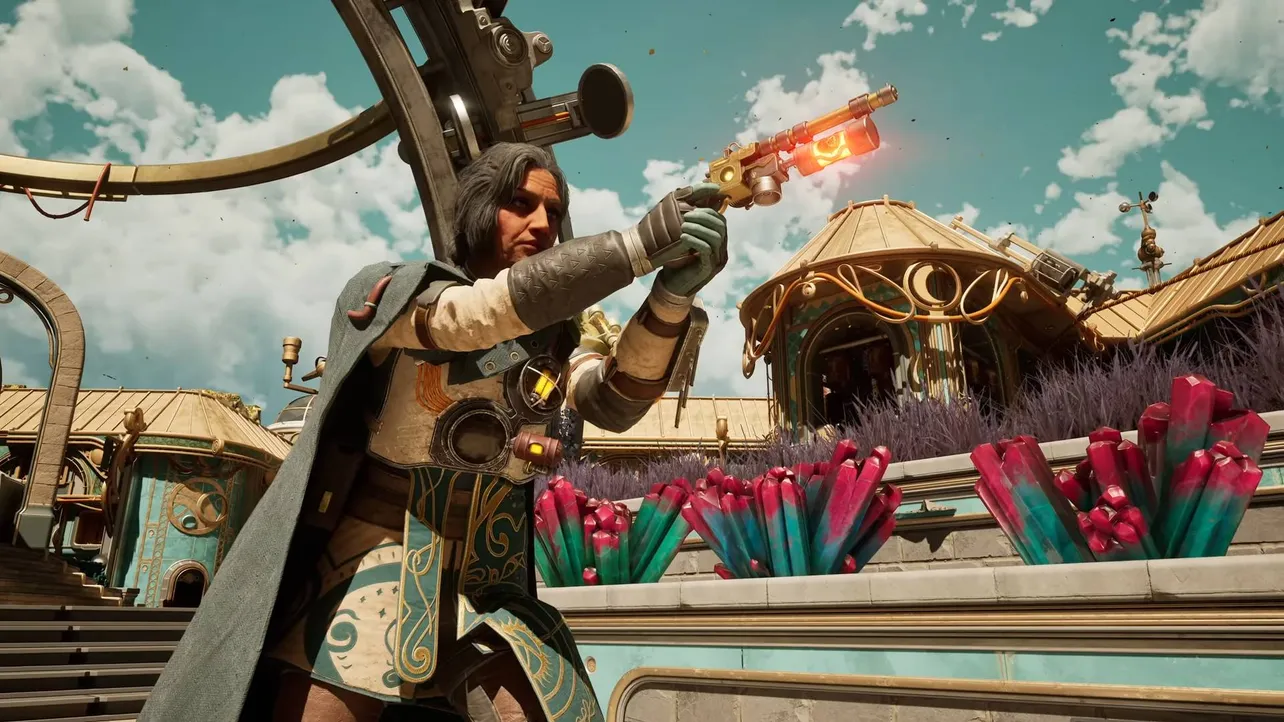The Outer Worlds 2 leans on a compact set of 12 skills that define combat performance, exploration options, dialogue checks, and how effectively companions fight at your side. After setting appearance, background, and traits, you select three starting skills. These choices steer your opening hours and unlock early perks, but you can broaden your build as you level, so prioritize what you’ll use most.
All 12 skills in The Outer Worlds 2 and what they do
| Skill | What it affects | Key effects |
|---|---|---|
| Engineering | Armor effectiveness, mechanical fixes, mod synergies | Repairs mechanical systems at or below your skill value; adds +1% Damage Resistance |
| Explosives | Grenades, mines, area‑damage weapons, trap handling | +10% Explosive Damage; +1% resistance to explosive damage; disarm mines and traps |
| Guns | All ballistic, shock, plasma, and bio firearms | +10% Ranged Damage; +1% Armor Penetration |
| Hack | Terminals, automechanicals, vending machines | Passes hack checks up to your skill value; +5% damage vs. automechanicals |
| Leadership | Companion offense, survivability, and ability cadence | +8% Companion Damage; +4% Companion Health |
| Lockpick | Locked doors and containers, pickpocketing via perks | Opens locks up to your skill value; +1% Evasion Chance |
| Melee | All close‑quarters weapons and blocking | +10% Melee Damage; −2% damage taken while blocking |
| Medical | Inhaler uptime, toxicity threshold, anti‑creature tools | +7 Toxicity Crash Threshold; +5% damage vs. creatures |
| Observation | Hidden world objects, subtle dialogue cues, weakspots | Reveals hidden objects up to your skill value; +15% Weakspot Damage |
| Science! | Gadget energy and status stacking, TTD uptime | +7 Gadget Energy meter max; +10% more stacks of non‑Physical status effects |
| Sneak | Detection while crouched, ambush setups, trap avoidance via perks | +35% Sneak Attack Damage; −2% NPC detection rate |
| Speech | Conversation checks, vendor behavior, faction rapport via perks | Selects speech checks up to your skill value; +5% damage vs. humans |

How skills work: checks, scaling, and perks
- You pick three starting skills during character creation. They immediately shape combat numbers, world interactions, and which early perks appear in your perk list.
- Skills gate checks and interactions: locks, hacks, speech prompts, and hidden objects succeed or appear when the requirement is at or below your current skill value.
- Each skill provides passive bonuses that grow as you invest more into that skill. Examples include flat percentage boosts (like ranged or melee damage), mitigation while blocking, or added armor penetration.
- Investing in a skill also surfaces related perks, letting you expand what that skill can do (e.g., pickpocketing from Lockpick, disabling automechs from Hack, stronger mod synergies from Engineering).
- Over a standard playthrough, you can acquire points across all 12 skills. The current level cap is 30 and grants a total of 60 skill points, giving you room to cover gaps beyond your starting trio.
Note: taking the “Dumb” negative trait limits five skills of your choosing at the start. That tradeoff can be useful for focused builds but will constrain early flexibility.
Early skill picks that pay off
If you want broad utility right away, four skills consistently deliver across missions and vendor runs:
- Engineering: passive damage resistance plus repair options, and it feeds into defensive and gear‑mod perks.
- Lockpick: more doors and containers opened without detours, plus a small evasion bump and access to pickpocketing perks.
- Speech: more conversation branches and barter perks, with a modest damage bonus versus human enemies.
- Sneak: safer scouting and strong opening damage from ambushes, while also reducing how quickly NPCs spot you.

Those picks don’t lock you into a single playstyle, and they smooth exploration, economy, and encounter control from the first hours.
Skill pairings by playstyle
- Gunslinger: Guns for damage and armor penetration, plus Observation to amplify weakspot hits. Add Explosives if you favor area control.
- Stealth operator: Sneak for detection and ambush bonuses, Lockpick for routes and loot, and Observation to surface hidden objects and cues.
- Negotiator: Speech for checks and vendor perks, then Hack for terminals, automechs, and restricted vending inventory.
- Melee brawler: Melee to push raw output and reduce damage while blocking; pair with Engineering for extra survivability or Medical for longer inhaler uptime and better results against creatures.
- Squad leader: Leadership to scale companion health and damage; blend with Guns or Science! if you want longer Tactical Time Dilation windows and stronger status stacking.

What to prioritize as you level
- Secure core checks: put points into Lockpick, Hack, and Speech until their common thresholds in your current zone are reliably green. That prevents missed loot, routes, and quest solutions.
- Boost your primary damage lane: invest steadily in Guns or Melee and complement it with Observation or Explosives depending on your weapons.
- Stabilize survivability: Engineering and Medical together blunt spikes via passive resistance and inhaler uptime; both are noticeable in harder encounters.
- Unlock targeted perks: when a perk you want is tied to a skill, nudge that skill high enough to reveal and purchase it, then resume your main path.
Pick three skills that match how you like to solve problems—kick in the door, talk your way through, or quietly reroute around them—and use level‑up points to round out the edges. The system is small on purpose: each investment has visible, immediate effects, and the right pairings make your build feel coherent from the first mission onward.

